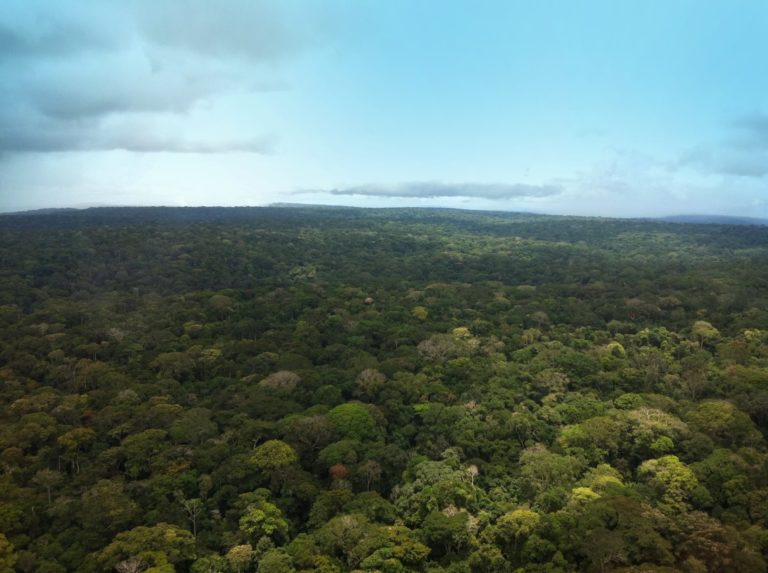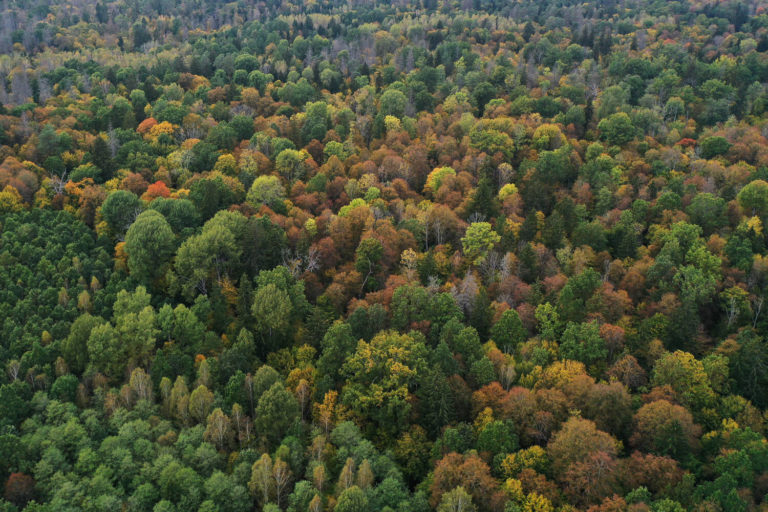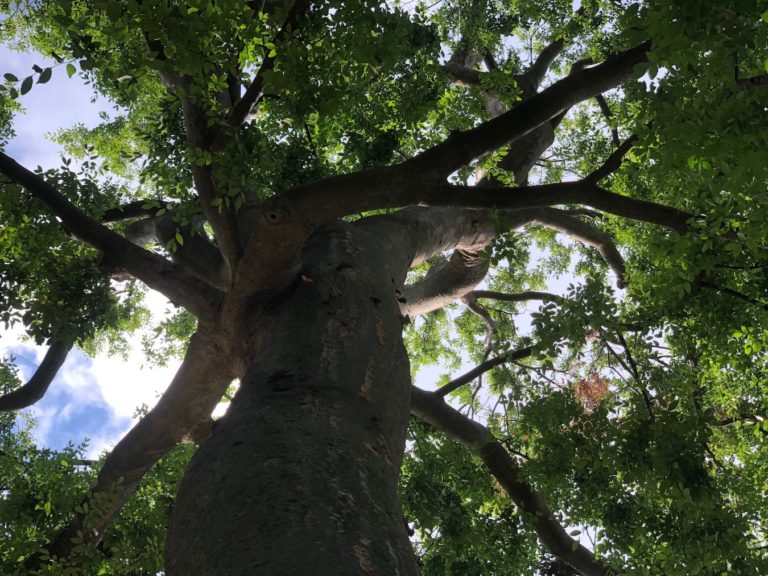These immense forests have covered the planet for hundreds of millions of years. What remains of them today? What has become of these fauna- and flora-rich landscapes of authentic extraordinary biological diversity from which our human species has emerged? This is by no means an exhaustive scientific study, but a brief overview. Some doubt remains as to the condition of certain forests. We have indicated this when we were not able to verify this in the field. We will furthermore focus mainly on lowland forests.
So let’s begin our little inventory of primeval forests at a glance, an inventory organized according to the three major planetary regions.
The North, South and Tropics
The northern high-latitudes
In Europe: Poland’s Białowieża Forest and, not too far away, Siberia. These are true primeval forests, with few tree species and few but very large animals (moose, lichen-eating reindeer and the European bison in Białowieża).
In North America, on the Pacific Coast: Northern California, Oregon and Olympic National Park on Washington’s Olympic Peninsula.
Quebec’s Far North, with very few tree species, especially resinous trees.
Japan’s national parks also contain beautiful forests.
The southern high-latitudes
In South America: Chile and southern Argentina have very beautiful forests abundant with trees.
In Africa: a lot of uncertainty over what remains.
Australia: probably nothing left after it was ravaged by the massive bushfires of 2019.
New Zealand.
Tasmania still has beautiful forests.
The tropics
In Africa: Gabon with its big, iconic Moabi tree, the Democratic Republic of Congo, Congo-Brazzaville. The situation in Côte d’Ivoire appears more uncertain, with the exception of the great Taï National Park. In Ethiopia, the situation is also uncertain. On the other hand, the northeast coast of Madagascar boasts a beautiful landscape with the rainforest of Masoala National Park.
In Asia: the north of Borneo, Yunnan and Burma are home to beautiful primeval forests. We are much less certain this is the case on the island of Taiwan. Laos. Malaysia is still home to the magnificent Taman Negara National Park.
In Central and South America: there are sizeable portions of forest in the Amazon, French Guiana, Dominica and Costa Rica. Mexico is home to the beautiful moist forests of Yucatán, but we aren’t sure about the condition of those in the state of Veracruz. Western Brazil is home to forests in the states of Acre and Rondonia (those in the latter have suffered from fires).
In Polynesia: the Marquesas Islands.
In Melanesia: the most beautiful primeval forests are in New Guinea, Irian Jaya and Papua, but they are now being very actively exploited. New Caledonia has a National Park. The Solomon Islands. The Vanuatu archipelago.
A devastating decline
Nearly 70% of existing primeval forests disappeared in the second half of the twentieth century. Francis Hallé often cites the example of the beautiful forest near Abidjan that he studied at the beginning of his scientific career…which is now a supermarket parking lot.
Most of these forests have been destroyed and replaced by plantations of cultivated trees. The greatest deforestation of all has taken place in Asia, where a family of trees with extremely precious wood, the dipterocarps, gave rise to extreme speculation. There was also greater demographic pressure there.
Africa is barely better off, being only “protected” in regions with very unstable and insecure conditions where forests are not heavily exploited. Elsewhere, the situation is tragic.
Europe has lost almost all of its old forests (and Western Europe has forgotten what they actually were).
Is this an irreversible phenomenon? Not in the medium and long term. For example, in a tropical zone, an exploited forest left undisturbed for 50 years would recover the elements of a primeval forest. But only if exploitation stops for good, because if anyone is allowed to enter (poachers, farmers), the reconstruction process would be rendered impossible.
There have been some very conclusive experiments in this regard, notably in Thailand. An English group carried out a series of studies following a very strictly respected protocol: large cuttings of seven tree species were planted in a small area, establishing a tree plantation. This small plantation attracted animals, especially birds, whose excrement in turn carried more trees. If there are intact forests nearby, then the trees reappear on their own.
If nobody enters for 50 years, a beautiful forest atmosphere will develop.
On average, a primeval forest takes seven centuries to regrow in a tropical zone.
In non-tropical areas, this process takes much longer. About ten centuries. This is the work that our era owes to future generations.



